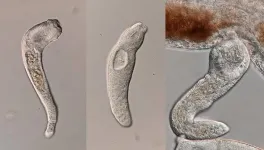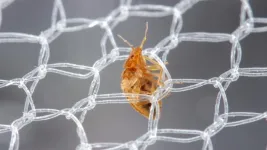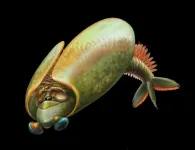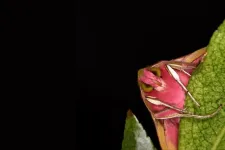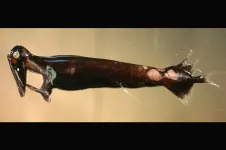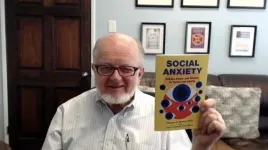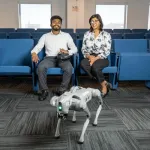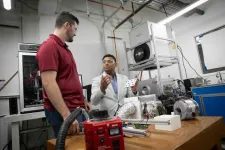(Press-News.org) When people think of a concussion or a traumatic brain injury caused by intimate partner violence (IPV), they might picture people in a heterosexual relationship, or a man hurting a woman.
But a UBC Okanagan researcher points out that IPV, and its repercussions, is an issue in all relationships. Doctoral student Tori Stranges recently published a paper examining the prevalence and damage done by violence in Two-Spirit, Lesbian, Gay, Bisexual, Trans, Queer (or Questioning), Intersex and Asexual (2SLGBTQIA+) relationships.
“It’s very common for people to think that violence doesn’t happen in queer relationships because the way we view violence is through a traditional heteronormative lens—where all relationships are heterosexual,” says Stranges, a researcher with UBCO’s School of Health and Exercise Sciences. “But IPV is defined as a pattern of physical, sexual, psychological and emotional violence in the context of coercive control by a former or current intimate partner. And it can happen to anyone, any gender, any sexual orientation and in any relationship.”
The study, published recently in the Journal of Interpersonal Violence, reveals 98 per cent of respondents reported some experience with IPV in their lifetime, and about 70 per cent reported symptoms consistent with a brain injury as a result. Those symptoms result from trauma and abrasions to the face, head and neck mostly from the impact from hands, fists or being thrown into walls or downstairs, or being shaken. However, victims also suffer trauma from non-fatal strangulation and suffer a hypoxic or anoxic injury if the brain is deprived of oxygen for even a short time.
“Previous research has demonstrated that head trauma and attempted strangulation sustained in the context of IPV can result in a brain injury. However, until now, no research has existed exploring IPV brain injuries for the 2SLGBTQIA+ community, indicating a gap in the knowledge on the the issue.”
IPV in 2SLGBTQIA+ relationships poses a distinct challenge, she notes, primarily due to the potential invisibility of the relationship. For example, in a same-sex relationship where the couple is not out, IPV may go unnoticed by friends, family or professionals, making it difficult for the survivor to seek help or leave.
“The reality for many survivors of IPV in 2SLGBTQIA+ relationships is the people they first turn to for help do not validate their experiences as legitimate abuse and may even refuse to help,” Stranges says. “This can lead to survivors doubting whether they are true victims, deserve help, should try to leave, and whether help will be there for them if they do leave.”
The struggle to legitimize IPV in 2SLGBTQIA+ relationships as a genuine public health concern may be rooted in the struggle to legitimize the human rights of those same people, she adds.
“Lack of recognition and legal protection may lead to disparities in how IPV and IPV brain injury within the 2SLGBTQIA+ community are addressed and understood. It may discourage individuals from seeking help or reporting abuse, as they may fear discrimination or judgment from authorities or service providers who may not understand their unique experiences.”
It may also result in a lack of dedicated resources and funding for research and support services tailored to the specific needs of the community. To address these issues, Stranges says it is essential to work towards not only the inclusion of the 2S/LGBTQ community in understanding IPV and IPV brain injury, but also full recognition of human rights for this population group.
She also notes the disparities in IPV brain injury exposure across different subgroups within the 2SLGBTQIA+ community, further emphasize the need for tailored approaches in research, policy and practice. Particularly, the overrepresentation of Indigenous and Two-Spirit individuals in her study points to the intersectional nature of oppression and the urgent need for decolonized and inclusive research methodologies and health interventions.
Stranges works with UBCO’s Dr. Paul van Donkelaar, a Professor in the School of Health and Exercise Sciences and scientific advisor for Supporting Survivors of Abuse and Brain Injury through Research. Just last month, a team of UBC researchers, including Dr. van Donkelaar, was awarded $3.4M to address brain injuries in survivors of intimate partner violence.
“We are just scratching the surface in our understanding of IPV brain injury and this work is amongst the first in the world to examine this issue in the 2SLGBTQIA+community,” says Dr. van Donkelaar. “It’s important research and it’s vital that the findings from this work inform supports for IPV survivors.”
END
UBC Okanagan study raises concerns about partner violence in queer relationships
Violence in an “invisible relationship” can make seeking help feel impossible
2024-07-24
ELSE PRESS RELEASES FROM THIS DATE:
Human-infecting parasite produces sterile soldiers like ants and termites
2024-07-24
New research from scientists at UC San Diego’s Scripps Institution of Oceanography finds a tiny freshwater parasite known to cause health problems in humans defends its colonies with a class of soldiers that cannot reproduce.
The discovery, published today in the Proceedings of the National Academy of Sciences and funded by the National Institutes of Health, vaults this species of parasitic flatworm into the ranks of complex animal societies such as ants, bees and termites, which also have distinct classes of workers and soldiers that have given up reproduction to serve their colony.
When it gets into humans, usually via the consumption of raw or undercooked fish, this species ...
The unintended consequences of success against malaria
2024-07-24
For decades, insecticide-treated bed nets and indoor insecticide spraying regimens have been important – and widely successful – treatments against mosquitoes that transmit malaria, a dangerous global disease. Yet these treatments also – for a time – suppressed undesirable household insects like bed bugs, cockroaches and flies.
Now, a new North Carolina State University study reviewing the academic literature on indoor pest control shows that as the household insects developed resistance ...
Taco-shaped arthropod from Royal Ontario Museum’s Burgess Shale fossils gives new insights into the history of the first mandibulates
2024-07-24
A new study, led by palaeontologists at the Royal Ontario Museum (ROM) is helping resolve the evolution and ecology of Odaraia, a taco-shaped marine animal that lived during the Cambrian period. Fossils collected by ROM reveal Odaraia had mandibles. Palaeontologists are finally able to place it as belonging to the mandibulates, ending its long enigmatic classification among the arthropods since it was first discovered in the Burgess Shale over 100 years ago and revealing more about early evolution and diversification. The study The Cambrian Odaraia alata and the colonization of nektonic suspension-feeding niches by early mandibulates was published ...
Butterflies accumulate enough static electricity to attract pollen without contact, new research finds
2024-07-24
Butterflies and moths collect so much static electricity whilst in flight, that pollen grains from flowers can be pulled by static electricity across air gaps of several millimetres or centimetres.
The finding, published today in the Journal of the Royal Society Interface, suggests that this likely increases their efficiency and effectiveness as pollinators.
The University of Bristol team also observed that the amount of static electricity carried by butterflies and moths varies between different species, and that these variations correlate with differences in their ecology, such as whether they visit flowers, are ...
Eyes for Love: Searching for light and a mate in the deep, dark sea, male dragonfishes grow larger eyes than the females they seek
2024-07-24
Chestnut Hill, Mass (07/24/2024) – A small but ferocious predator, the male dragonfish will apparently do anything for love. Or at least to find a mate.
A new study by researchers at Boston College found the eyes of the male dragonfish grow larger for mate-seeking purposes, making the dragonfish an anomaly in vertebrate evolution, the team reported today in the Royal Society journal Biology Letters.
Like many creatures that inhabit the dark depths of the sea, dragonfishes survive thanks to numerous ...
PNNL scientists tap nation’s fastest computers to explore critical science questions
2024-07-24
RICHLAND, Wash.—Researchers at the Department of Energy’s Pacific Northwest National Laboratory have been awarded more than 3 million node hours on the nation’s most powerful computers to explore questions around pathogens, climate and energy-efficient microelectronics.
Access to the nation’s supercomputers, granted to Margaret Cheung, Daniel Mejia Rodriguez and Po-Lun Ma, is a coveted prize among scientists. The node hours represent an investment of several million dollars in computing time awarded to PNNL scientists to explore important science questions.
The awards are among 44 projects awarded through ...
Peri-operative care of transgender and gender-diverse individuals: new guidance for clinicians and departments published
2024-07-24
New guidance on peri-operative care of transgender and gender-diverse individuals is today published in Anaesthesia (the journal of the Association of Anaesthetists) to guide best practice to ensure the safety and dignity of transgender and gender-diverse people in the peri-operative period. The guidance has been produced by a working group of experts including Dr Stuart Edwardson, Royal Infirmary of Edinburgh, Edinburgh, UK, and Dr Luke Flower, Victor Philip Dahdaleh Heart and Lung Research Institute, Cambridge, UK, and colleagues.
The number of people openly identifying ...
Clinical psychologist’s book addresses largely ignored problem: social anxiety
2024-07-23
RIVERISDE, Calif. -- We all have some social anxiety. The nervousness we might feel before giving a speech is one example. Some people, however, have more social anxiety than others, and limit their social engagement due to excessive chronic fears of being embarrassed or humiliated. Although such social anxiety is common in both adolescents and adults, it is rarely diagnosed and treated.
In a new book titled “Social Anxiety: Hidden Fears and Shame in Teens and Adults,” Thomas E. Brown, a clinical professor of psychiatry and neuroscience in the University of California, Riverside's School of Medicine , explains ...
Researchers leveraging AI to train (robotic) dogs to respond to their masters
2024-07-23
An international collaboration seeks to innovate the future of how a mechanical man’s best friend interacts with its owner, using a combination of AI and edge computing called edge intelligence.
The project is sponsored through a one-year seed grant from the Institute for Future Technologies (IFT), a partnership between New Jersey Institute of Technology (NJIT) and Ben-Gurion University of the Negev (BGU).
Assistant Professor Kasthuri Jayarajah in NJIT’s Ying Wu College of Computing is researching how to design a socially assistive model ...
Drawing water from dry air
2024-07-23
Earth’s atmosphere holds an ocean of water, enough liquid to fill Utah’s Great Salt Lake 800 times.
Extracting some of that moisture is seen as a potential way to provide clean drinking water to billions of people globally who face chronic shortages.
Existing technologies for atmospheric water harvesting (AWH) are saddled with numerous downsides associated with size, cost and efficiency. But new research from University of Utah engineering researchers has yielded insights that could improve efficiencies and bring the world one step closer to tapping the air as a culinary water source in arid places.
The study unveils the first-of-its-kind ...
LAST 30 PRESS RELEASES:
Velocity gradients key to explaining large-scale magnetic field structure
Bird retinas function without oxygen – solving a centuries-old biological mystery
Pregnancy- and abortion-related mortality in the US, 2018-2021
Global burden of violence against transgender and gender-diverse adults
Generative AI use and depressive symptoms among US adults
Antibiotic therapy for uncomplicated acute appendicitis
Childhood ADHD linked to midlife physical health problems
Patients struggle to measure blood pressure at home
A new method to unlock vast lithium stores
Scientists unveil “dissolution barocaloric” cooling, opening new path to zero-carbon refrigeration
Microplastics in the atmosphere: Higher emissions from land areas than from the ocean
Metal clumps in quantum state: Vienna research team breaks records
PolyU develops new human-safe magnetorheological fibres, leading innovations in smart wearable textiles
Rice establishes Global Brain Economy Initiative in Davos, aligned with new report on brain health and AI
Quantum error correction with logical qubits
Nutrient-stimulated hormone-based therapies: A new frontier in the prevention and management of MASH-associated hepatocellular carcinoma
Trauma or toxic? A deep dive into the impact of stress on kids' health
Turning industrial exhaust into useful materials with a new electrode
ORNL to partner with Type One Energy, UT on world-class facility to validate next-gen fusion
New journal section tackles AI, ethics, and digital health communication
Jeonbuk National University researchers develop novel dual-chemical looping method for efficient ammonia synthesis
New study sheds light on stroke recovery via exercise-induced migration of mitochondria
SEOULTECH researchers develop sodium-based next-generation smart electrochromic windows
Data-driven analysis reveals three archetypes of armed conflicts
Heart disease, stroke deaths down, yet still kill more in US than any other cause
Light switches made of ultra-thin semiconductor layers
Creative talent: has AI knocked humans out?
Sculpting complex, 3D nanostructures with a focused ion beam
A year after undermining Bredt’s rule, UCLA scientists have made cage-shaped, double-bonded molecules that defy expectations
Human activities drive global dryland greening
[Press-News.org] UBC Okanagan study raises concerns about partner violence in queer relationshipsViolence in an “invisible relationship” can make seeking help feel impossible
